




















| Home |
| Organisation |
| Competition |
| Women |
| Connect to Windsurfing |
| Environment |
| Archive News |
| Contact |
|
ENVIRONMENT |
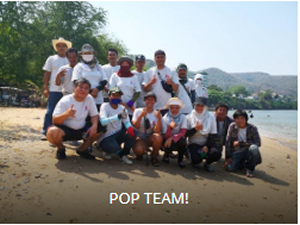 Plastic Offset Program: 2019 – 2020 50,000 KG Target Reached! Starboard’s incredible Plastic Offset Program reached its 50,000 kg target of collecting plastic trash from the beaches in Thailand. Let’s take a look into what we have learnt over the last year. Whilst it is World Environment Day and many of us feel that every day should have this focus, lets just take a moment to consider the environment around you right now. What does it provide you? Are you able to breathe deep, see nature flourish, can it grow your herbs, fruits and vegetables, can you play in any nearby water because it is clean and safe enough? After this great reflection, how great does it make you feel, is it perfect or do you feel it could be better? Starboard creates innovative products for you to enjoy the waters around you. Enabling you to get so close to the water that you are likely to get not only your mind but also your whole body immersed into it. However, Starboard has taken a look and realised we can do better. The plastic economy is something Starboard contributes to as a company. This is the same plastic economy that pollutes the waterways around us and negatively impacts not only us but also the whole biodiversity around us. Starboard is aware of this and whilst we do not have a complete solution we have many programs and initiatives to reduce our impact. Read on . . . |
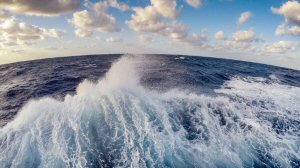 Scientists estimate that 50-80 percent of the oxygen production on Earth comes from the ocean. The majority of this production is from oceanic plankton - drifting plants, algae, and some bacteria that can photosynthesize. One particular species, Prochlorococcus, is the smallest photosynthetic organism on Earth. But this little bacteria produces up to 20 percent of the oxygen in our entire biosphere. That’s a higher percentage than all of the tropical rainforests on land combined. Calculating the exact percentage of oxygen produced in the ocean is difficult because the amounts are constantly changing. Scientists can use satellite imagery to track photosynthesizing plankton and estimate the amount of photosynthesis occurring in the ocean, but satellite imagery cannot tell the whole story. The amount of plankton changes seasonally and in response to changes in the water’s nutrient load, temperature, and other factors. Studies have shown that the amount of oxygen in specific locations varies with time of day and with the tides. Read on . . . |
Boris Herrmann and the Malizia Ocean Challenge, who won the "ocean tribute" Award at boot Düsseldorf in January for their commitment to protecting our seas, are sailing the Swedish climate activist Greta Thunberg CO2-neutrally to her lectures at two United Nations climate summits. The initiative of German ocean sailor Herrmann, Monegasque Pierre Casiraghi and Birte Lorenzen takes young people from all over the world on board and introduces them to the topics of marine and climate protection. |
Today we ended Mission One and presented our first plastic catch onshore, in Vancouver Canada. The plastic trash will be transformed into sustainable products that will be sold to help fund the continuation of the cleanup operations. To confirm the origin of these future plastic products, we have worked with DNV GL, an international classification society, to verify plastic that is removed from the ocean. The purpose of the first mission in the Great Pacific Garbage Patch was to confirm the concept of passive plastic collection by means of the natural forces of the ocean. After several ups and downs, in October 2019, we announced that the system is capturing and collecting plastic debris, from massive ghost nets down to microplastics one millimeter in size. Since the launch of the first cleanup system, System 001, in September 2018, most items on the long list of deliverables for the technology could be checked one-by-one. Early reports showed, however, that System 001 was not retaining plastic as it should, and despite attempts to remedy this and successful design confirmations, the system suffered a fatigue fracture, resulting in a need to return the system to shore in January 2019. The engineering team performed a root cause analysis, redesigned a modified system, and, in record time, The Ocean Cleanup deployed the upgraded system, System 001/B, in June 2019. After several months of trialing modifications, the concept’s ability to capture plastic was confirmed. |
11th Hour Racing is on a mission to empower the sailing communities and industry to take an active role to uncover and utilize solutions for the health of our oceans, and has been an active sponsor for events and racing teams to heighten the exposure of the organization and their mission. Through funding from The Schmidt Family Foundation, they have issued a dozen new global grants to organizations that are addressing sea-level rise, habitat loss, science education for under-served students, and plastics pollution. 11th Hour Racing awarded $473K in grants to projects in Argentina, France, Kenya, the UK, and the USA. This latest round of grants brings the total of new grants for 2019 to $1.7 million. The funding will support the work of these organizations to advance the following four areas that serve as catalysts to improve ocean health: • Reducing plastic pollution • Advancing clean technologies and best practices • Tackling water quality and climate change through ecosystem restoration • Fostering ocean literacy and stewardship |
The Great Pacific Garbage Patch is a collection of marine debris in the North Pacific Ocean between Hawaii and California with an estimated surface area of 1.6 million square kilometers. Contained by ocean currents, this equates to an area twice the size of Texas or three times the size of France. The good news is all this marine debris is corralled but the bad news is it’s a massive amount of waste that accumulates because much of it is not biodegradable. Many plastics do not wear down; they simply break into tinier and tinier pieces.
So while we can be better citizens on how we treat the ocean, cleaning up this mess remains a priority. While its presence poses risks for the safety and health of marine animals, there are health and economic implications for humans as well.
As a result, just because we don’t easily see it, we are feeling it. Addressing this situation has been the mission of The Ocean Cleanup, the Dutch non-profit organization which had launched a 600-meter plastic-sweeper to clean up the notorious floating Great Garbage Patch. |
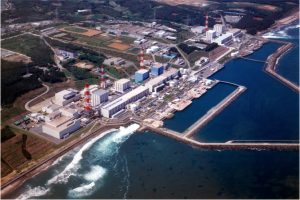 Japan could drain radioactive Fukushima water into the Pacific Japan could drain radioactive Fukushima water into the PacificIn the past eight years, the Tokyo Electric Power, also known as Tepco, collected over one million tonnes of radioactive water from the Fukushima nuclear power plant. The Japanese company kept the contaminated liquid taken from cooling pipes prevent the fuel cores from melting in large storage tanks located near the facility, in Okuma. However, both the company and the environment minister admit that they have run out of room to store water containing tritium. The only solution, says one of the members of the government, is to release it into the Pacific Ocean. "The only option is to drain it into the sea and dilute it. The government will still discuss this issue, but I would like to offer my simple opinion," said Yoshiaki Harada, the Japanese environment minister. However, the highly controversial decision is not unanimous, even within the Japanese government. |
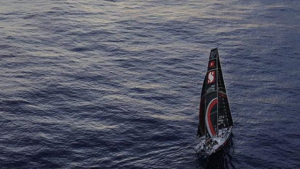 Inspiring youth for global change Inspiring youth for global changeOur planet cannot continue to consume the trash in the manner we are creating it, and a disrespect to the environment has exasperated the situation. But changing habits is hard, and while the current generation wrestles with new practices, it is incumbent for young people to be raised with them. An initiative led by the World Sailing Trust, the charitable arm of World Sailing, and the Ocean Heroes team, will seek to do this by delivering youth sustainability training at the 2019 Hempel Youth Sailing World Championships in Gdynia, Poland. The Championships, held from July 13 to 20, will see the delivery of the Ocean Heroes training program to the 415 competitors from 67 nations to activate them in stemming the flow of plastic pollution into the world’s oceans. Comprised of three core partners – Captain Planet Foundation, Lonely Whale, and Point Break Foundation – the Ocean Heroes team aim to provide young people, passionate about the oceans, with the knowledge, skills, and support to become effective advocates and campaigners in solving the global ocean plastics crisis. |
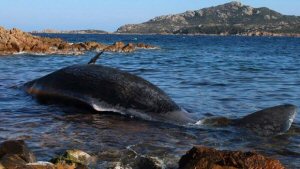 Recognizing the Need is a Start Recognizing the Need is a StartWhen more than 48 pounds of plastic, including disposable dishes, a corrugated tube, shopping bags and a detergent package with its bar code still visible, was recently found inside a dead sperm whale in Italy, it was the latest reminder that our food chain is living amid a trash dump. And while it is well-recognized that the bulk of the problem is in Asia, shifts have to begin somewhere so it is refreshing to see that evident as straws and meal containers in the USA move away from plastic to eco-friendly options However, it is easy to see these as symbolic gestures when you view how goods are packaged, or how our quest for convenience has fostered a reliance on non-degradable solutions. It will take a while to adjust adult habits, but recognizing the need is a start. Hopefully the next generation will have an easier time, particularly now that single-use plastic items such as straws, forks and knives as well as cotton buds will be banned in the European Union by 2021 following a recent vote by EU lawmakers as the bloc pushes manufacturers to step up their recycling efforts....…read the full article on Scuttlebutt . . . |
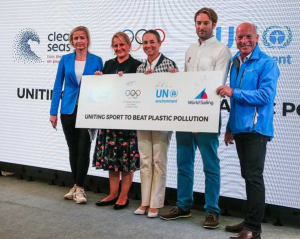 World Sailing partners with IOC and UN Environment to Beat Plastic Pollution18 World Sailing partners with IOC and UN Environment to Beat Plastic Pollution18World Sailing are pleased to announce two major firsts for the organisation as the world governing body continues along its Sustainability Agenda 2030 pathway. World Sailing has signed a memorandum of understanding with UN Environment which will see the two organisations work together to ensure the sport of sailing maintains its commitment to reducing its environmental impact whilst supporting the UN's Sustainable Development Goals. Secondly, World Sailing has partnered with the International Olympic Committee (IOC), making a pledge to join the UN Environment's Clean Seas campaign. The announcement was made today (5 June), World Environment Day, at the Volvo Ocean Race Summit in Cardiff, Great Britain. The Clean Seas Campaign, launched in January 2017, aims to increase global awareness of the marine litter issue and impact of litter in different parts of the world and to implement different measures that address gaps in waste management infrastructure. |
Henderson Island ought to be one of the most pristine places on earth: an uninhabited South Pacific atoll so remote that the nearest human settlement is the small island 120 miles away where the Bounty mutineers hid out. But the atoll’s white sand beaches are littered with tons of multicolored plastic junk, deposited there by ocean currents. “I’ve been fortunate in my career as a scientist to travel to some of the remote islands in the world, but Henderson was really quite an alarming situation,” Jennifer Lavers, a research scientist at the University of Tasmania in Australia, told the Australian Broadcasting Corporation. The mess on the beach, she said, was “the highest density of plastic I’ve really seen in the whole of my career.” . . . . Read more on Scuttlebutt.com |
Pacific Ocean Clean-up to start in 20 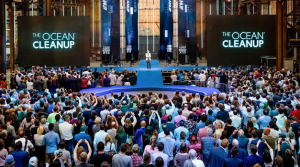 18 18Utrecht, The Netherlands (May 11, 2017) – The Ocean Cleanup, the Dutch foundation developing advanced technologies to rid the oceans of plastic, today announced it will start extracting plastic from the Great Pacific Garbage Patch within the next 12 months. The Ocean Clean-up further announced that parts of its first cleanup system are already in production. Thanks to an improved design, The Ocean Clean-up has increased the efficiency of the system, allowing for the clean-up of half the Great Pacific Garbage Patch in just 5 years. Founded in 2013 by then 18-year-old Boyan Slat, the main idea behind The Ocean Cleanup is to let the ocean currents do the work. An installation of U-shaped screens channels floating plastic to a central point. The concentrated plastic can then be extracted and shipped to shore for recycling into durable products. |
Straws are consistently on the top 10 lists for marine debris collected every year during the International Coastal Cleanup. It is estimated that Americans use a whopping 500 million straws per day – a number that, end-to-end, could circle the planet 2.5 times. Now imagine this number compounded on a global scale. While it seems simple, straws create a pressing threat to our oceans because they are made to be disposable, and on average are used for just 10 minutes. Plastic straws are rarely recyclable, requiring special facilities, and they almost always end up in a landfill, or worse the ocean. Over their lifespan in the ocean, the straw breaks down into smaller and smaller, even microscopic pieces. Pieces so small that single-celled organisms and other marine life eat them – the plastic remains forever – and then starts back up the food chain. Shocking photos of straws in sea turtles noses and the stomachs of seabirds can easily be found online. Read more on Scuttlebutt.com |
On Tuesday 31 January 2017, the Sea Shepherd Conservation Society unveiled its newest vessel, the M/V John Paul DeJoria, at a marina in Miami. The DeJoria is one of two 110-foot Island-class patrol boats that Sea Shepherd purchased from the U.S. Coast Guard in 2015. Her namesake, John Paul DeJoria, is a co-founder of John Paul Mitchell Systems salon products and has worked with Sea Shepherd since 1998. He is a member of the group's advisory board, and he also sponsored the purchase of the DeJoria's sister ship, the Farley Mowat. "We’re proud today to unveil and to launch the John Paul DeJoria," said Captain Paul Watson, Sea Shepherd's founder. "I can’t think of a person who I am more proud to have a name on a vessel." Captain Watson said that the DeJoria's maiden voyage will include anti-poaching work off Malpelo Island, Cocos Island and the Galapagos off Central America. Watson also mentioned the group’s recent work in combating wildlife trafficking on shore, particularly in the Chinese shark fin trade. "We’re making progress in both stopping poachers and, also on the other end, trying to convince governments that we have to put an end to this," he said. Instead of the traditional champagne, a bottle of tequila from DeJoria-owned Patron Spirits was used for the time-honored commemoration. When DeJoria broke it against the anchor, the M/V John Paul DeJoria became the first ship in history to be christened with a bottle of Patron tequila. DeJoria has also made his own contributions to the protection of marine life. The island of Barbuda has recently implemented a fishing ban out to two nautical miles from shore, and DeJoria has sealed a deal on a $250 million venture that will build a resort, providing local fisherman with alternative work. “There’s about 30 families [on the island] there that depend on fishing, and they average about $10,000 a year,” he said. "We…. are going to [help them with their income] for a full year until a resort is built and they have regular work. This way we find other work for those people." |
|
A report by the Ellen MacArthur Foundation concluded that by 2050 oceans will contain more weight of plastics than fish. "The New Plastics Economy: Rethinking the future of plastics" is the result of a three-year study of the powerful global plastic industry. In the next 20 years, the use of plastics will double.
1. Radically increase the economics, quality and uptake of recycling; 2. Scale up the adoption of reusable packaging; 3. Scale up the adoption of industrially compostable plastic packaging for targeted applications; 4. Improve after-use collection, storage and reprocessing infrastructure in high-leakage countries; 5. Increase the economic attractiveness of keeping materials in the system; 6. Steer innovation investment towards creating materials and formats that reduce the negative environmental impact of plastic packaging leakage; 7. Scale up existing efforts to understand the potential impact of substances raising concerns and accelerate development and application of safe alternatives.
|
|
by Hilary Kotoun, Social Impact Director, Sailors for the Sea The boating community exists in the boundary where land meets water, and today that boundary’s location is changing due to the impacts of global warming. Sea Level Rise Infrastructure Issues We are in Hot Water Warming waters are also predicted to change ocean currents and circulation. With a 0.9°F rise in sea surface temperatures over the last century, ecosystem change can be seen in many areas of the ocean. In Hawaii and the Caribbean, coral bleaching is a persistent problem and only becoming worse. Coral bleaching occurs when water temperatures become too high, forcing reefs to expel the algae (zooxanthellae) that help nourish and give them their vibrant colour. Coral reefs are essential spawning, nursery, breeding, and feeding grounds, and one of the most diverse ecosystems on the planet
|
|
Our goal is to inspire intelligent stewardship of our Earth’s biosphere. Our projects contribute to the existing body of knowledge about the biosphere and inspire individuals to get involved through “hands-on” fieldwork and community-based outreach programs. Biosphere Foundation was founded as a 501 (c) 3 non-profit organization in 1991 and has championed a wide-range of ecological research and education projects around the world. The pages of our website feature descriptions of past and current projects, videos, books and more than two decades of research data. We also provide information about the organization’s history and philosophy, and we invite you tohelp support our work on this beautiful blue biosphere we call home. |
The best sea and ocean quotes of all timePlanet Earth has five great oceans and 113 seas. They represent 72% of the surface of the globe, and together they've been an endless source of inspiration for humankind. The oceans and seas have changed lives forever. Saline water is part of who we are, even when it claims souls and dreams. Humans have always showed and intense relationship with the oceans. Pouring feelings into the seas is an ancient practice. We've done it through philosophical thoughts, inspiring speeches, self-analysis, confessional quotes and universal sayings. Putting it simply, we are in love with the ocean since the beginning of time. |
|
Coral and reef fishes are not like pandas and tigers, and the extinction risks they face are much lower. Leading coral reef scientists in Australia and the USA say there needs to be a new approach to protecting the future of marine ecosystems, with a shift away from the current focus on extinction threat. 'Extinction is the final endpoint, but coral reefs are in deep trouble long before we get to that point. We need to take action much earlier,' says Professor David Bellwood from the ARC Centre of Excellence for Coral Reef Studies (Coral CoE) at James Cook University. 'The goal should be to maintain reefs that can support corals, fish and humans' Professor Bellwood says. In a world first study published in the journal, Current Biology, researchers tested the concept of ‘double jeopardy’, which is widely used to assess extinction risk. It is based on the assumption that the risk of extinction is greater if a species has both a small geographic range and low numbers. The researchers counted the numbers of individuals of more than 400 species of fishes and corals across a 10,000km swath of the Pacific Ocean, from Indonesia to French Polynesia. |
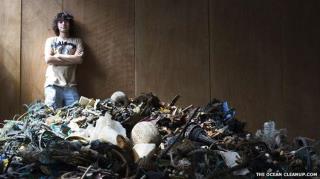 Boyan Slat is a 20-year-old on a mission Boyan Slat is a 20-year-old on a mission Boyan Slat is a 20-year-old on a mission - to rid the planet's oceans of floating plastic. He has dedicated his teenage years to finding a way of collecting it. But can the system really work - and is there any point when so much new plastic waste is still flowing into the sea every day? 'I don't understand why 'obsessive' has a negative connotation, I'm an obsessive and I like it,' says Boyan Slat. 'I get an idea and I stick to it.' This idea came to him at the age of 16, in the summer of 2011, when diving in Greece. 'I saw more plastic bags than fish,' says Slat. He was shocked, and even more shocked that there was no apparent solution. 'Everyone said to me: 'Oh there's nothing you can do about plastic once it gets into the oceans,' and I wondered whether that was true.' Global production of plastic now stands at 288 million tonnes per year, of which 10% ends up in the ocean in time. Most of that - 80% - comes from land-based sources. Litter gets swept into drains, and ends up in rivers - so that plastic straw or cup lid you dropped, the cigarette butt you threw on the road - they could all end up in the sea. The plastic is carried by currents and congregates in five revolving water systems, called gyres, in the major oceans, the most infamous being the huge Pacific Garbage Patch, half way between Hawaii and California. Click here to read the full story. |
|
By the 2016 Olympic Games Brazil will not make good on its commitment to clean up Rio de Janeiro's sewage-filled Guanabara Bay, state environmental officials acknowledged in a letter obtained Saturday by The Associated Press. In the May 7 letter addressed to Sports Minister Aldo Rebelo, Rio's state environment secretary, Carlos Francisco Portinho, asks for more funding for pollution control efforts and admits that at current investment rates, it will take more than a decade to significantly reduce the levels of pollution in Guanabara Bay, where the Olympic sailing events and rowing are to be held. |
|
On Matt Rutherford's first sailing trip, from Maryland to the Florida Keys, he encountered three hurricanes (his boat ran aground and was even struck by lightning). Undeterred, he continued sailing, and eight years later became the first person to make a solo, non-stop sailing trip around North and South America. Now, Rutherford is taking on a new challenge. On Sunday, April 13, he and Nicole Trenholm, field operations scientist at his nonprofit, the Ocean Research Project, will attempt the longest continuous marine plastics survey in history, starting from Oakland and ending in Japan. Read more . . . |
|
As lakes thaw and boats get loaded back into the water, take a minute to get your brain around this chart (CLICK to enlarge). Maybe this year, you'll stop throwing cigarette butts over the side, or letting crew get away with tossing aluminium cans in the sea? Everything lasts a lot longer than you might think it does, so keep it all on the boat. Source: NOAA |
|
|
Deep-Sea Waves Reveal Secrets Waves deep below the ocean surface help explain how global currents work, and may improve climate predictions, according to scientists including a Stanford Woods Institute-affiliated researcher. Stanford researchers Leif Thomas and Dan Whitt have discovered an undersea surf zone, where wind-spawned waves traveling as much as 500 meters below the sea surface break as they hit the boundaries between currents of differing density, such as cool subpolar and warm subtropical currents, causing the water carried by the currents to mix. Thomas and Whitt developed a mathematical model analyzing how internal waves propagate in the ocean and interact with currents. Whitt is lead author of a paper describing their research that was published online by the American Meteorological Society's Journal of Physical Oceanography. Their model showed that when internal waves hit a current with a different density, they slow down and break, just as surface waves break when their progress is slowed by shallows, and mixing results. "Strong ocean currents such as the Gulf Stream present ideal conditions for internal wave breaking," Thomas said. "We basically discovered a surf zone for these wind-driven internal waves." Full article and link to their research paper at woods.stanford.edu |
|
Velocitek Makes Second Annual Donation to Sailors for the Sea Sailors for the Sea extends a thank you to Velocitek for their second year in a row of financial support. Since 2006 Velocitek has been a member of the environmental organization 1% for the Planet, a coalition of more than 1,000 businesses that donate 1% of their sales to a network of more than 3,000 environmental organizations worldwide. Alec Stewart, president of Velocitek notes; "Velocitek is a company made up of people who love the ocean. Being based in Hawaii, we are surrounded by the ocean and we spend a lot of time playing in and on the water. We also realize that clean oceans are essential to our livelihood, and the success of the recreational marine industry as a whole. We believe that individually we have a small impact in preserving our oceans, but together, we can make a big difference. We support the ongoing commitment Sailors for the Sea has made to educating the sailing community on the threats to oceans and coastal waters and empowering sailors - from youth to experienced life-long recreational and professional sailors - on the actions they can take to protect marine health for generations to come." ( . . . more ) |
|
|
|
The Blue Project uses sport, adventure and digital media to connect more people to our blue environment. Jacques Cousteau once said that "People protect what they love" so our mission is to develop innovative ways to encourage greater care of our blue environment. Our journey started with a small group of people who derive a large part of their inspiration from competing and working in the natural environment. We decided to share their stories, images and content with a wider audience and set up the Blue Project as a communications outreach programme. In 2009, we launched the Blue Mile as a mass-participation event designed to connect more people and raise funds to support WWF's marine and freshwater programme – http://www.theblueproject.org/. |
|
Massive Arctic Ice Melt Reported An area of Arctic sea ice bigger than the United States melted this year, according the U.N. weather agency, which said the dramatic decline illustrates that climate change is happening "before our eyes." In a report released at U.N. climate talks in the Qatari capital of Doha, the World Meteorological Organization said the Arctic ice melt was one of a myriad of extreme and record-breaking weather events to hit the planet in 2012. Droughts devastated nearly two-thirds of the United States as well as western Russia and southern Europe. Floods swamped West Africa and heat waves left much of the Northern Hemisphere sweltering. |
|
THE oceans have risen and fallen throughout Earth's history, following the planet's natural temperature cycles. Twenty thousand years ago, what is now New York City was at the edge of a giant ice sheet, and the sea was roughly 400 feet lower. But as the last ice age thawed, the sea rose to where it is today. Now we are in a new warming phase, and the oceans are rising again after thousands of years of stability. As scientists who study sea level change and storm surge, we fear that Hurricane Sandy gave only a modest preview of the dangers to come, as we continue to power our global economy by burning fuels that pollute the air with heat-trapping gases. ( .... more) |
|
|
|
|
|
|
NFWF supports hundreds of projects across the country to protect and restore wildlife and their habitats. |
 Founded by David Rockefeller, Jr., Sailors for the Sea educates and engages the boating community in the worldwide protection of the oceans. Among their core programs is Clean Regattas, which assists and certifies yacht clubs and regatta organizers to host clean events that minimize impacts upon the oceans. Founded by David Rockefeller, Jr., Sailors for the Sea educates and engages the boating community in the worldwide protection of the oceans. Among their core programs is Clean Regattas, which assists and certifies yacht clubs and regatta organizers to host clean events that minimize impacts upon the oceans.
Sailors for the Sea is working with the America's Cup Event Authority toward a zero waste and carbon neutral commitment for the racing next year. While this would seem to be a challenge given the event's need for support boats and helicopters, progress is occurring. Here were some of the highlights during the AC World Series event in August:
|
 Formed in January 2010, Ocean Crusaders Pty Ltd (Formerly Save Our Seas International Pty Ltd) is out to create a difference in our world by protecting our oceans from us humans. We focus on several key campaigns such as plastic, dolphins, sharks, turtles and sailing. Formed in January 2010, Ocean Crusaders Pty Ltd (Formerly Save Our Seas International Pty Ltd) is out to create a difference in our world by protecting our oceans from us humans. We focus on several key campaigns such as plastic, dolphins, sharks, turtles and sailing.
Founder Ian Thomson launched the campaign by smashing the solo circumnavigation of Australia record. By creating a profile for himself he in turn created awareness of the cause. Ocean Crusaders now aim to create Awareness of the issues and Educate people of what we can do to make a difference. The greatest issue our oceans face is that the world is unaware of the problem we are causing. The convenient plastic bag and plastic products are everywhere and no one thinks of where they are going. We slaughter thousands of dolphins, turtles and sharks and hundreds of whales every year with little knowledge of what damage we are causing. Education is a major part of our program. Our team regularly travel around to schools conducting talks to students. It is the next generation that is more open to change and working with them helps our situation immensely. With representatives across the globe and growing constantly, our education program is a unique learning tool and available to everyone free of charge. We also run a program for the sailing community where events can become Ocean Safe Regattas by following our simple set of guidelines. As ocean users, sailors need to be leaders in looking after our oceans and it is very simple to do. |
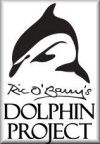 Ric O'Barry's Dolphin Project is a campaign under the International Marine Mammal Project at the non-profit Earth Island Institute. This work has been chronicled in films such as A Fall From Freedom, the Oscar-winning documentary The Cove, and in the Animal Planet mini-series Blood Dolphin. To learn more, click here. Ric O'Barry's Dolphin Project is a campaign under the International Marine Mammal Project at the non-profit Earth Island Institute. This work has been chronicled in films such as A Fall From Freedom, the Oscar-winning documentary The Cove, and in the Animal Planet mini-series Blood Dolphin. To learn more, click here.
Ric O'Barry's Dolphin Project is an Earth Island campaign which encompasses Ric's work around the world as he saves dolphins from slaughter and exploitation. The goal of Ric O'Barry's Dolphin Project is to put an end to dolphin slaughter and exploitation once and for all. Dolphins are regularly captured, harassed, slaughtered and sold into captivity around the world - all in the name of profit. The Dolphin Project works not only to halt these slaughters in countries around the world, but also to rehabilitate captive dolphins, investigate and advocate for economic alternatives to dolphin slaughter exploitation, and to put a permanent end to dolphin captivity.
The Dolphin Project has achieved many important victories for dolphins over the years. We brought the world's attention to brutal drive hunts taking place along the coast of Japan, as seen in the 2009 Academy Award-winning feature documentary "The Cove"; we successfully negotiated for an end to dolphin slaughter in the Solomon Islands; and we continue to raise awareness that captivity is cruel. Ric O'Barry has been working towards these goals for over 40 years, and he continues his quest to put an end to dolphin suffering. Be sure to stay tuned for information on how you can get involved and make a difference. |
|
The Garbage Patch As sailors, the ocean is our playground, and for some, it is our office. Every day we go out on the water we make an impact on our ocean, yet so many people are unaware of that very impact. So here are some alarming stats for you:
So if I said to you that the ocean produces 60-80% of the worlds oxygen and that our every day habits are slowly killing it, would it make you think twice? Yes, I am saying that your habits are risking the very air we breathe. Read More on oceancrusaders.org |






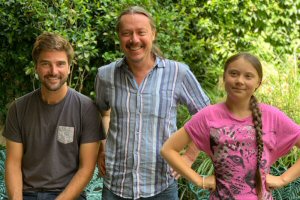
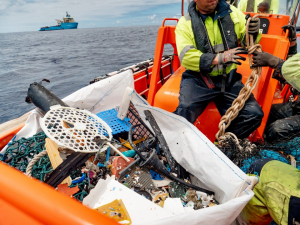
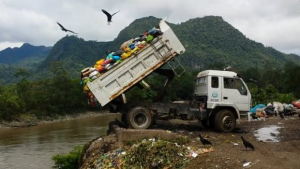
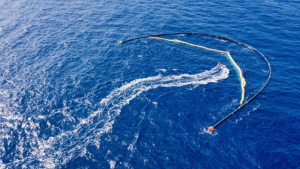
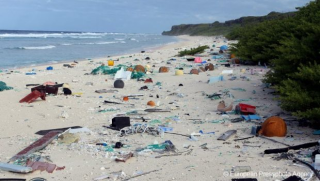 Pacific Island Awash in Tons of Trash
Pacific Island Awash in Tons of Trash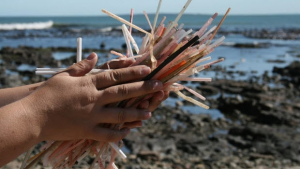 Straws by Request Only
Straws by Request Only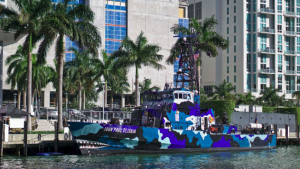 Sea Shepherd Rechristens Ex-Coast Guard Cutter
Sea Shepherd Rechristens Ex-Coast Guard Cutter 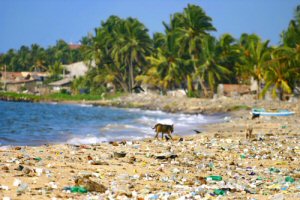 Oceans will contain more weight of plastics than fish by 2050
Oceans will contain more weight of plastics than fish by 2050 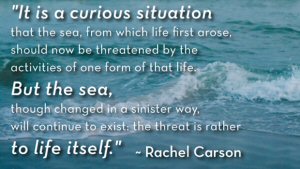 The Ocean's Future
The Ocean's Future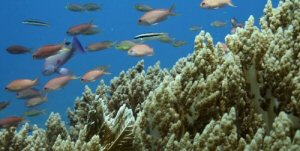 Biosphere Foundation
Biosphere Foundation 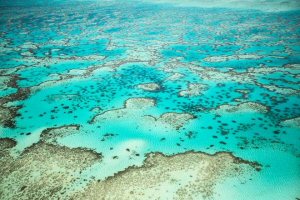 Extinction risk not the answer for reef futures
Extinction risk not the answer for reef futures 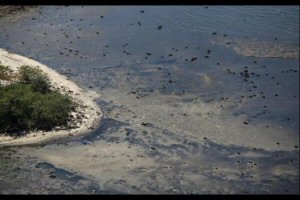
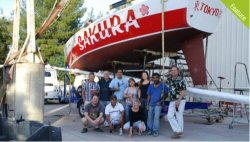 Trawling for Trash across the Pacific Ocean
Trawling for Trash across the Pacific Ocean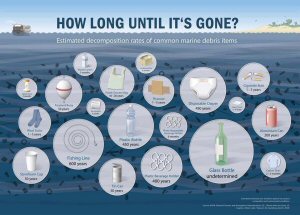
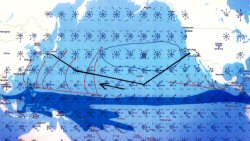 Pacific ocean pollution survey
Pacific ocean pollution survey
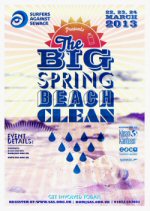 SAS present their next event, the Big Spring Beach Clean 2013.
SAS present their next event, the Big Spring Beach Clean 2013.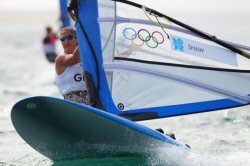 Caring for the Blue with Bryony Shaw
Caring for the Blue with Bryony Shaw
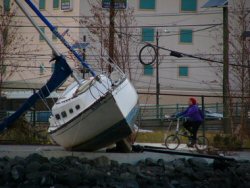 Rising Seas, Vanishing Coastlines
Rising Seas, Vanishing Coastlines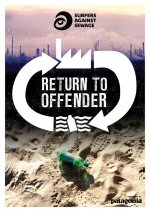 Challenge Marine Litter this weekend
Challenge Marine Litter this weekend
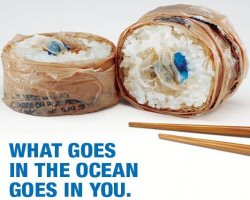 ENVIRONMENTALLY FRIENDLY CLUBS
ENVIRONMENTALLY FRIENDLY CLUBS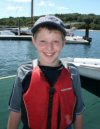 On October 20, 2012, Justin M. Smith embarked on a very special sail. Though the 12 year old from Muttontown, NY has been sailing for three years, he had never done something quite like this before: Justin sailed his 8-foot Optimist across the Long Island Sound entirely by himself, as a way to raise money to help fund a project run by the
On October 20, 2012, Justin M. Smith embarked on a very special sail. Though the 12 year old from Muttontown, NY has been sailing for three years, he had never done something quite like this before: Justin sailed his 8-foot Optimist across the Long Island Sound entirely by himself, as a way to raise money to help fund a project run by the  National Fish and Wildlife Foundation (USA)
National Fish and Wildlife Foundation (USA)